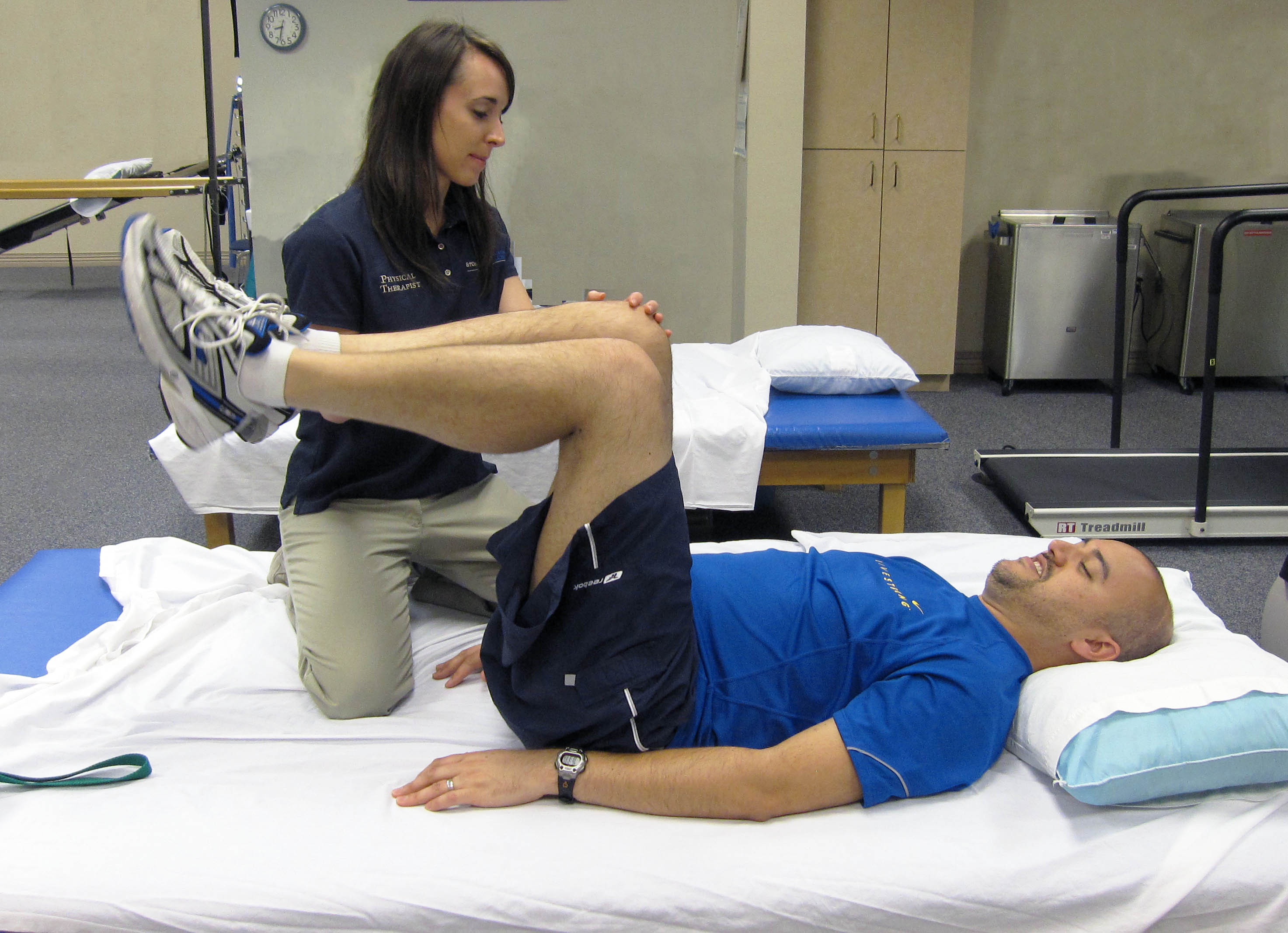 At IMPACT we realize that pelvic floor dysfunction is a problem that affects men and not just women. That is why our amazing pelvic floor physical therapists are experts at treating men’s health issues. Common symptoms of male pelvic floor dysfunction include pain in the lower back, pelvic region, genitals, or rectum. Other symptoms can consist of bowel or bladder issues, pressure in the pelvic region or rectum and muscle spasms in the pelvis.
At IMPACT we realize that pelvic floor dysfunction is a problem that affects men and not just women. That is why our amazing pelvic floor physical therapists are experts at treating men’s health issues. Common symptoms of male pelvic floor dysfunction include pain in the lower back, pelvic region, genitals, or rectum. Other symptoms can consist of bowel or bladder issues, pressure in the pelvic region or rectum and muscle spasms in the pelvis.
The most crucial factor in the treatment of pelvic floor dysfunctions is obtaining an accurate and timely diagnosis. A trained men’s health therapist will perform an extensive evaluation, possibly including an internal rectal assessment of the pelvic floor. The assessment will also include the spine and pelvis, as well as the muscles of the trunk, abdominal wall, and hip complexes.
Our Men’s health physical therapist will be able to address any pelvic floor dysfunction or other issues that you’re experiencing and help to improve your quality of life. Because of the nature of the complaints involved with these diagnoses, the therapist must be extensively trained, and sensitive to the needs of these patients. Patients with these diagnoses have functional limitations that include, but also go far beyond the realm of ADL’s and vocational tasks, and into their very private lives. Typical limitations may include problems with urination, defecation, intercourse, and personal hygiene. Only a trained men’s health physical therapist, who is comfortable discussing all of these issues, is the appropriate caregiver.
Common Men’s Pelvic Floor Diagnoses can Include:
Chronic Nonbacterial Prostatitis/Chronic Pelvic Pain Syndrome
Symptoms can include:
- Genital pain after urination
- Sexual dysfunction
- Difficulty urinating
- Frequent or urgent need to urinate
- Pain with urination or bowel movement
Proctalgia Fugax
Symptoms can include:
- Episodes of rectal pain lasting from seconds to up to 30 minutes.
- The pain in the rectum often described as feeling like stabbing, twisting, cramping, or sharp.
- These episodes usually happen no more that twice a month for most patients.
Pudendal Neuralgia-
This condition is long-term pelvic pain that happens when the pudendal nerve becomes damaged or irritated.
Symptoms can include:
- Pain in the pelvic area
- Sudden or gradually developing pain
- Constant pain that is worse while sitting down, but improves while lying down or standing
- The pelvic area experiencing numbness
- Increased pain sensitivity wearing clothing or light touch can become very uncomfortable
- Frequent or sudden urges to go to the bathroom
- Painful sex, and erectile dysfunction
Interstitial Cystitis/Painful Bladder Syndrome
Symptoms can include:
- Pain in the perineum that is the area between the scrotum and the anus in men
- Chronic pelvic pain
- Constant urge to urinate
- Frequent urination in small amounts throughout the day and night as often as 60 times
- Pain/discomfort while the bladder is filling up again and relief after urinating
Common Causes of Pelvic Floor Dysfunctions
Pelvic floor dysfunctions can have many different causes including traumatic, congenital, and chronic in nature. Some of the common causes of pelvic floor disorders can include:
- Prostate cancer
- Cancer treatment any place in the low back or pelvic floor area
- Musculoskeletal imbalances
- Poor posture
- Pelvic floor weakness
- Abdominal weakness
- Infections
- Pelvic fractures
- Prior surgeries
- Misuse or disuse of the pelvic floor
- Obesity
- Nerve injuries
- Traumatic injuries
- Medications
What to Expect from Men’s Health Physical Therapy at IMPACT?
Men’s Health therapy at IMPACT can help reduce or eliminate musculoskeletal pain and help restore normal movement, function, and comfort. A personalized program developed for each patient can start the healing process quickly. Some elements of the patients personalized health program can include:
Education- Sometimes the key to successful healing is simply understanding what caused the problem in the first place. Our therapist works to make sure that patients understand their diagnosis.
Manual Techniques- Joint dysfunction or misalignment can cause severe pain. Manual techniques can restore natural joint movement and alignment. These techniques are extremely gentle and therapeutic.
Soft Tissue Mobilization/Myofascial Release- Soft tissue (muscle, ligament, and fascia) tension can also cause severe pain. Massage techniques of compression, strolling and stretching can maximize relaxation of tense tissues. These techniques can be used in all muscle groups of the body, including the muscles of the pelvic floor.
Therapeutic Exercise- Exercise programs are developed specifically for each patient, including self-joint corrections, stretching, and strengthening exercises. These programs allow the patient to play an active role in his healing process, and may give him a sense of control over his dysfunction.
Postural Alignment Training- Postural habits can perpetuate pain. Education regarding proper posture for sitting, standing, sleeping and performing everyday activities will be an integral part of the program.
Modalities- Sometimes techniques aimed specifically at controlling pain or retraining muscles need to be used. Examples include heat, ice, ultrasound, and electrical stimulation.
Make an Appointment Today!
If you’re experiencing any of the symptoms of pelvic floor dysfunction make an appointment today. There is no need to spend years suffering with pain or dysfunction. Get help today!
